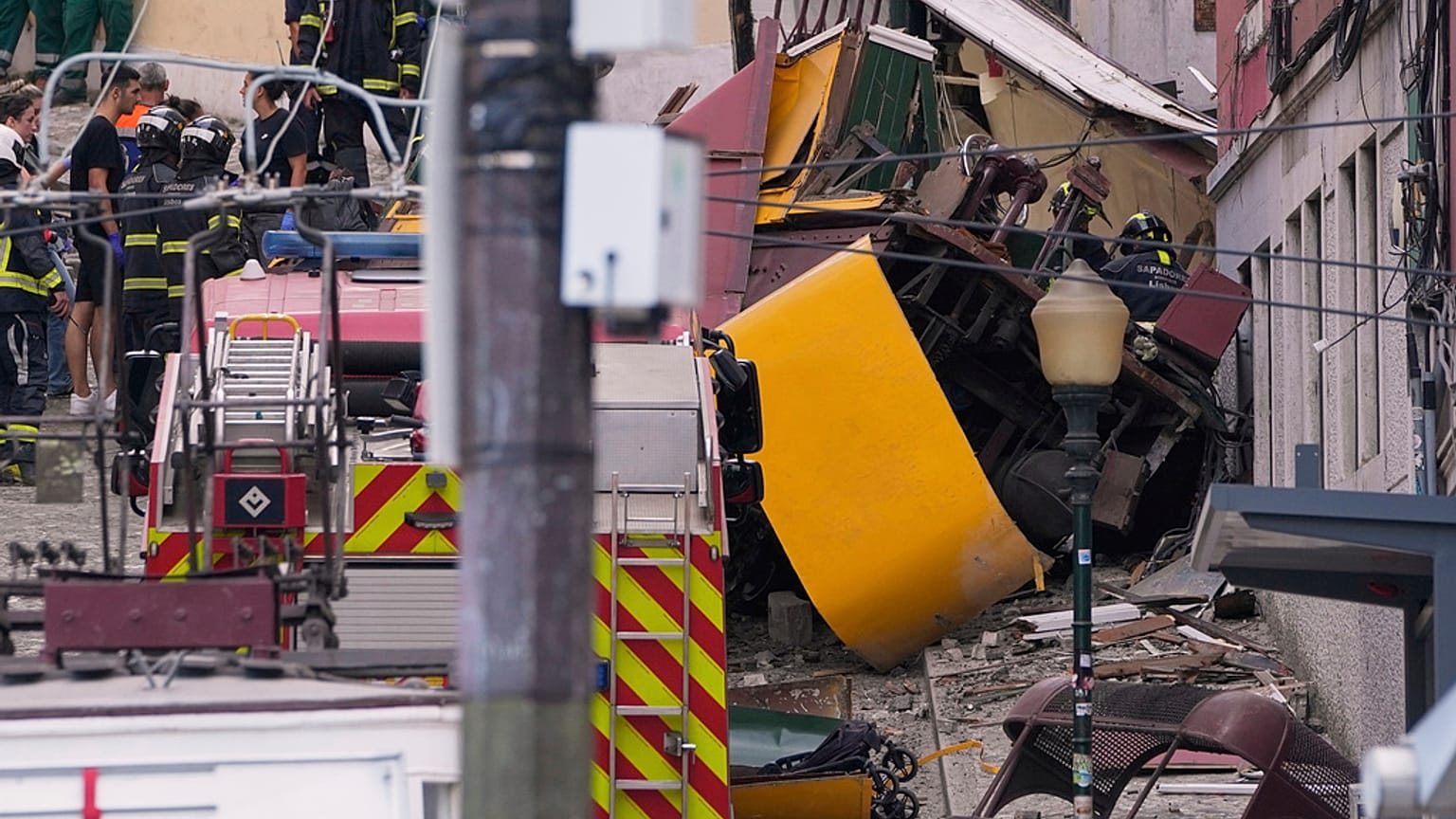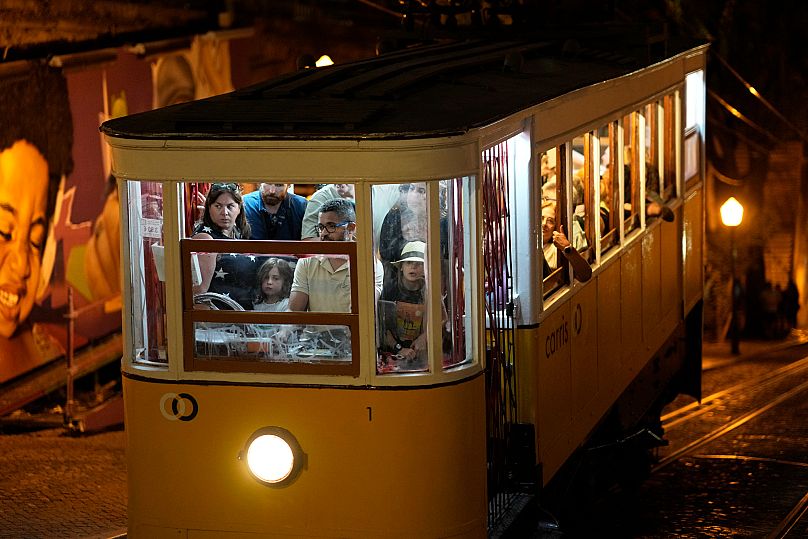The derailment and crash of the Glória funicular on 3 September killed 16 people and injured 21 others. Most of the victims were foreign nationals.
The failure of an underground cable and maintenance flaws contributed to last month's funicular crash in Lisbon that killed 16 people and injured 21 others, according to an official preliminary report.
The funicular's derailment is one of Portugal's worst tragedies in recent memory. The 140-year-old Glória funicular, which is a popular tourist attraction, derailed and crashed into a building on 3 September.
There were 11 foreigners among those killed, including three Brits, two South Koreans, two Canadians. The other victims were French, Swiss, American and Ukrainian.
The Portuguese victims included four employees from the same social care institution, whose offices sit at the top of the steep side road serviced by the funicular.
The Office for Air and Rail Accident Prevention and Investigation, which is a government body, said in the report the underground steel haulage cable which connected the two cars and balanced out their weight, wasn't strong enough for the job.
It wasn't certified for public transport nor installed in accordance with the manufacturer's instructions, according to the report.
The cable had been in use for less than a year.
The investigation identified five instances when the maintenance program referred to "non-existent, inapplicable or outdated standards," the report said.
After the cable broke, safety systems cut power to the funicular, meaning that the pneumatic brake no longer worked and the manual brake wasn’t strong enough to stop the car hurtling down the hill.
The investigation is also looking into whether funicular brakes need to be improved.
The report recommended that all Lisbon cable cars should be ordered out of service for immediate maintenance repairs.
In a statement, the municipal transport company Carris said it was "not possible at this time to state whether or not the non-conformities in the use of the cable are relevant to the accident".
Lisbon's Mayor Carlos Moedas, who was re-elected this month despite opposition claims he had failed in his duty of oversight over the funiculars, told local media that the report "reaffirms that the unfortunate tragedy ... was due to technical and not political causes".
The preliminary report is not intended to determine liability or establish blame, the investigating body said.
A fuller and more detailed final report resulting from closer analysis of the accident is expected next year.
















